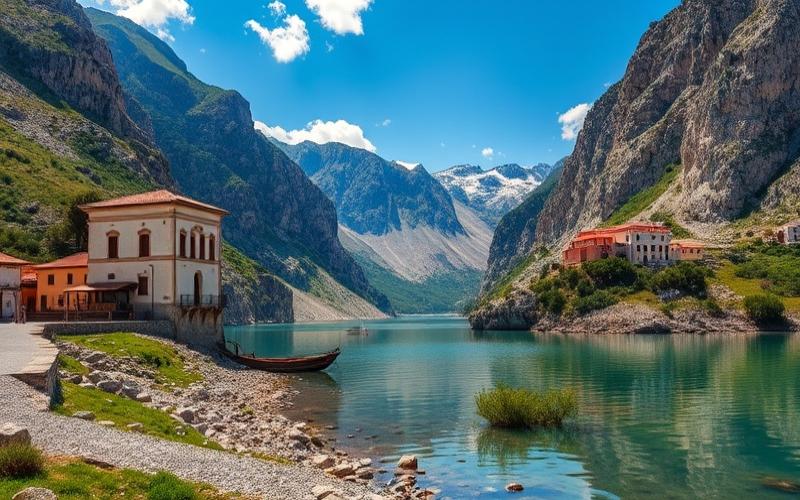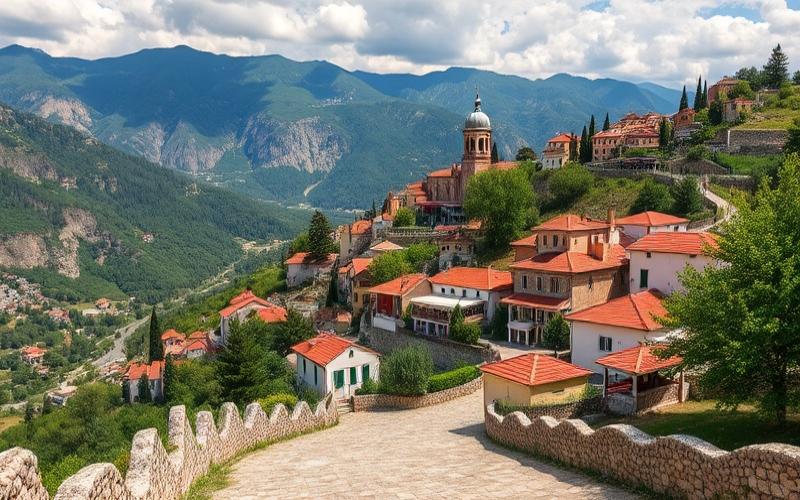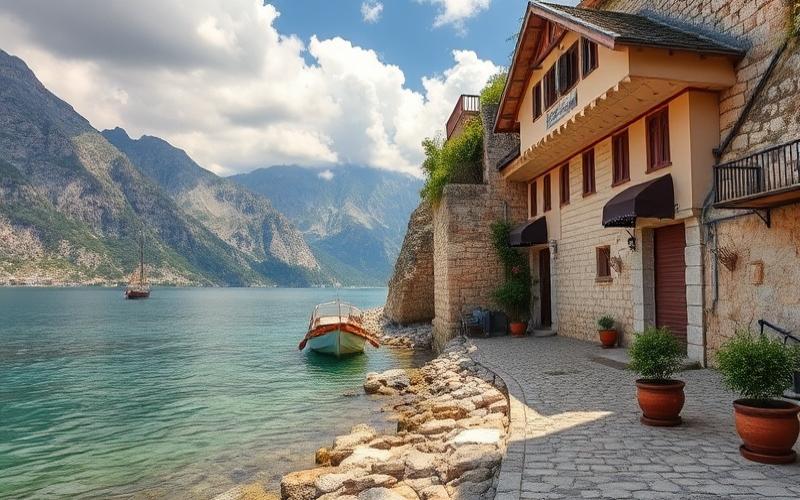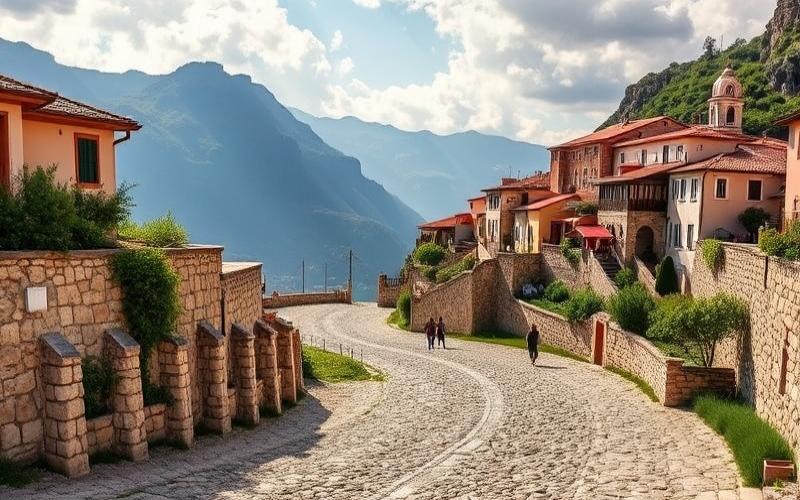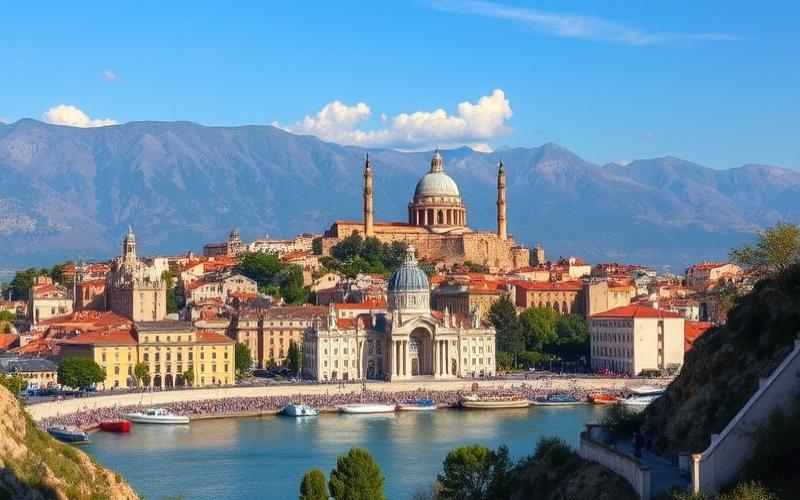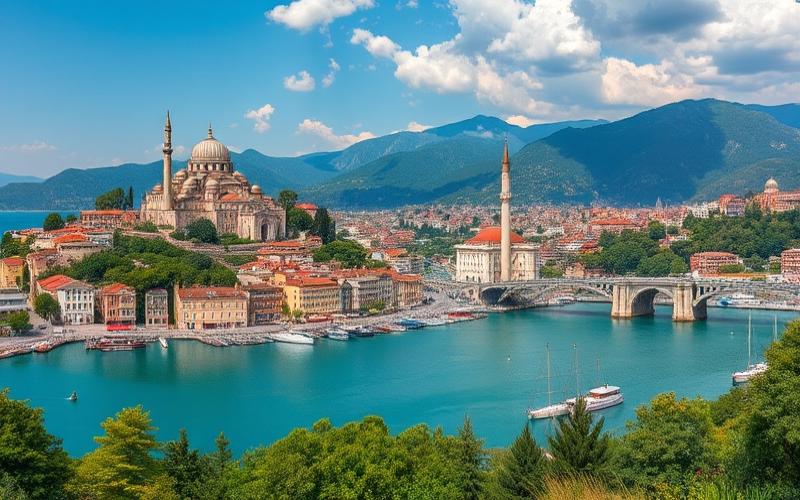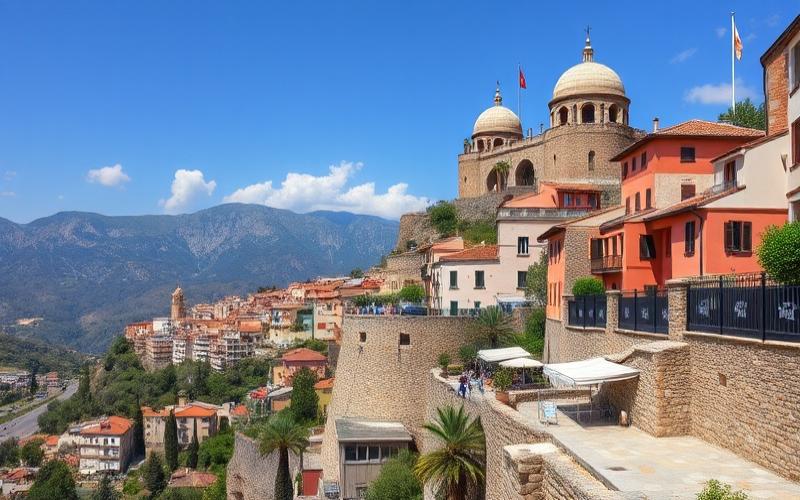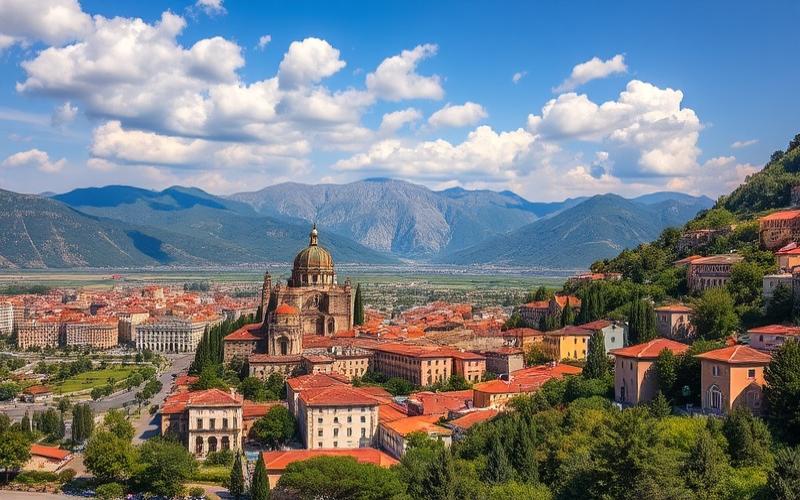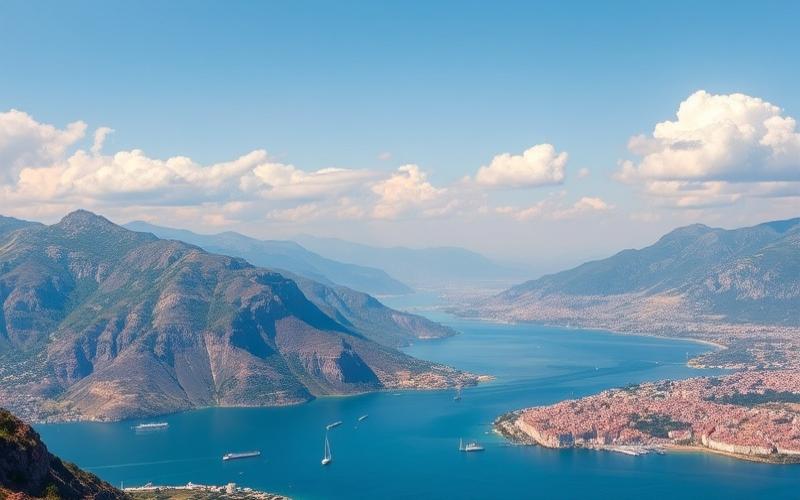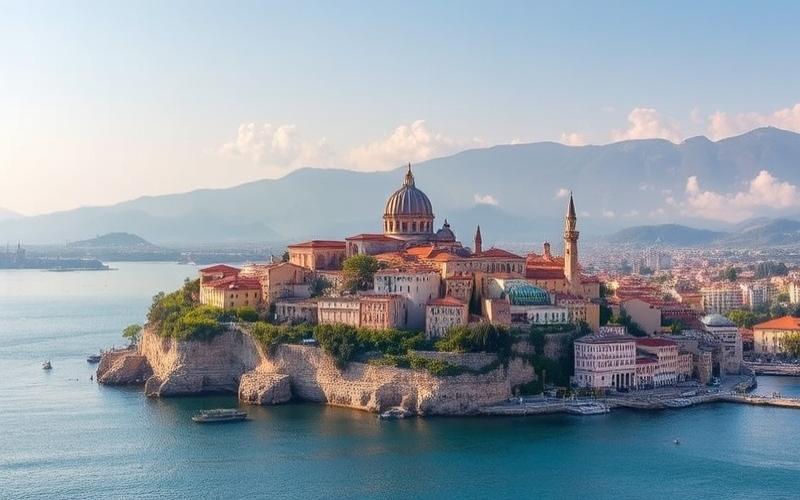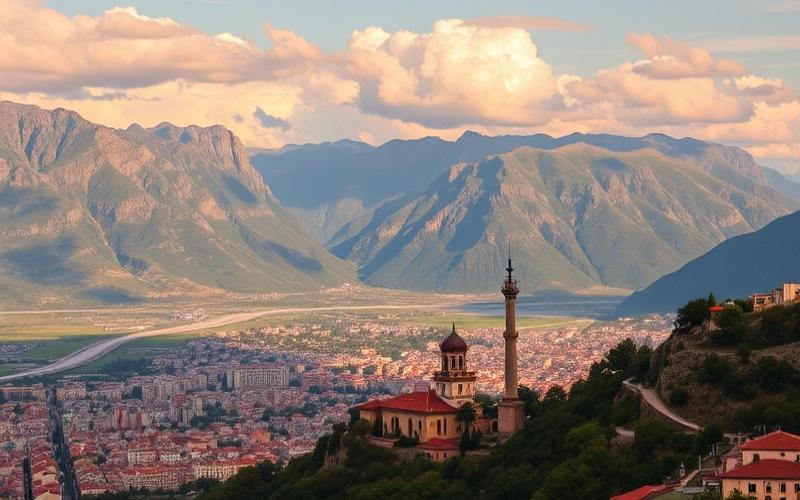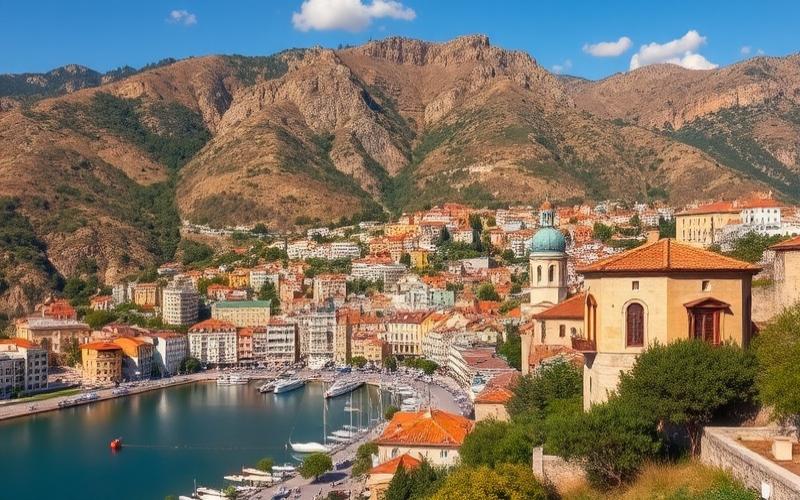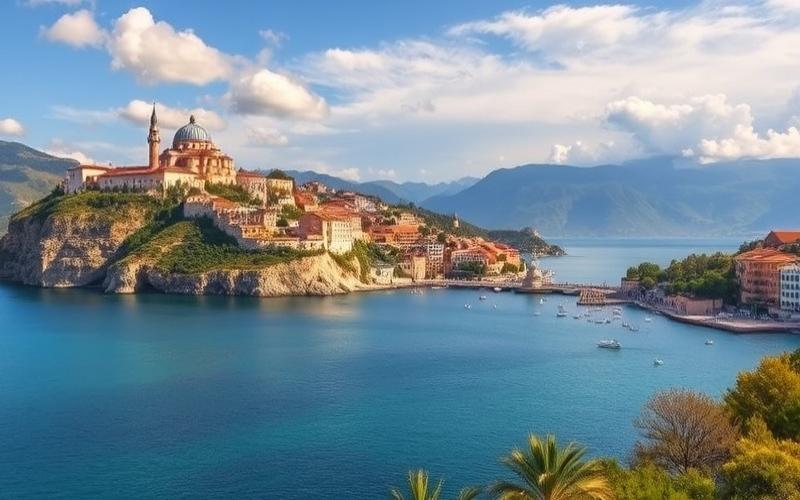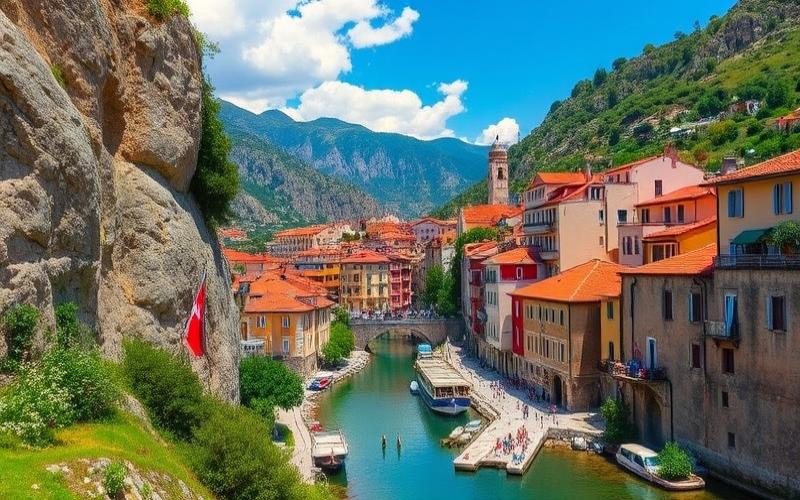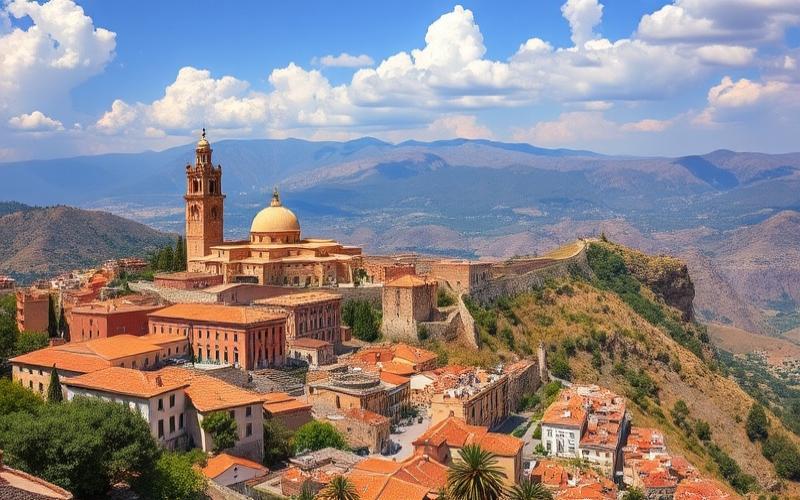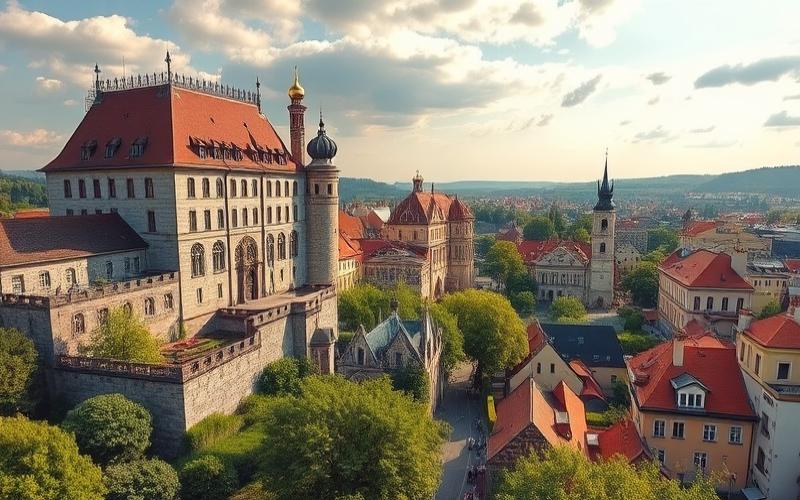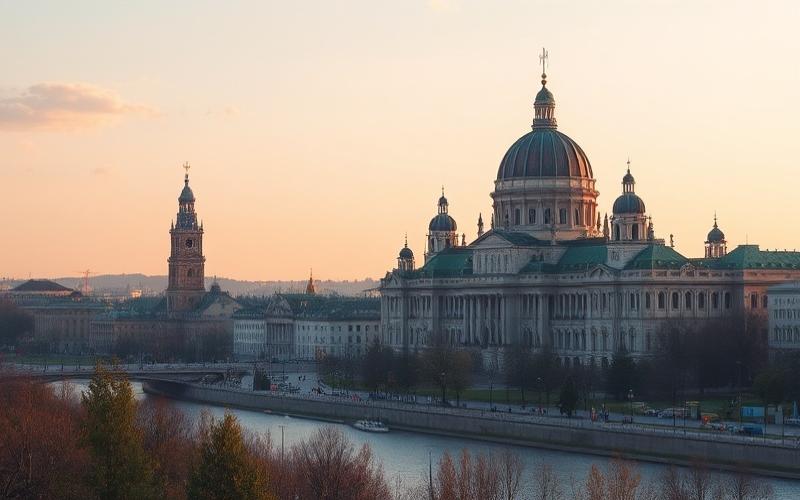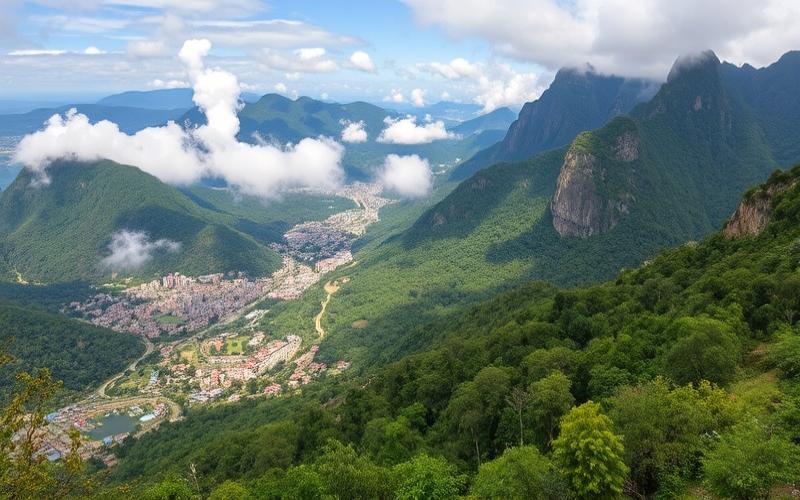
 Published on and written by Cyril Jarnias
Published on and written by Cyril Jarnias
Albania, a Balkan country undergoing rapid transformation, offers a unique experience for expatriates seeking adventure. If you’re considering settling in this country with its rich historical heritage and varied landscapes, public transportation will certainly be one of your concerns. Between modernity and tradition, the Albanian transport system has its particularities that are worth knowing to adapt well to local life. Let’s explore together the different available modes of transport and what they mean for your expatriate budget.
Buses: The Backbone of Albanian Urban Transport
In Albania, buses are the most widespread and accessible mode of public transportation. In major cities like Tirana, the capital, or Durrës, the urban bus network is relatively well-developed and constitutes the most economical option for daily commuting.
Urban buses are generally modern, air-conditioned, and relatively comfortable vehicles. They serve the main neighborhoods and points of interest in cities, with fairly high frequency during peak hours. However, it’s important to note that schedules can be somewhat random, and it’s not uncommon for buses to arrive with some delay, especially outside of peak hours.
To use urban buses, you can purchase single tickets directly from the driver or at certain kiosks. The price of a bus ticket in Tirana is about 40 leks (€0.40), making it a very affordable means of transportation. Some cities also offer monthly passes, which can be advantageous if you frequently use public transportation.
Good to know:
Urban buses in Albania are an economical and practical option for getting around the city, but you need to arm yourself with patience and flexibility when facing sometimes approximate schedules.
Furgons: The Flexible Alternative for Intercity Travel
For travel between Albanian cities, furgons (minibuses) are a very popular option. These vehicles, often vans or minibuses, offer a more flexible and faster alternative to classic intercity buses.
Furgons don’t always follow fixed schedules and generally depart when they’re full. They’re particularly practical for medium-distance trips, for example between Tirana and Durrës or Shkodër. Comfort can vary considerably from one vehicle to another, some being modern and air-conditioned, others more rustic.
Furgon fares are generally a bit higher than those of intercity buses, but remain affordable. For example, a Tirana-Durrës trip by furgon costs about 200-300 leks (€2-3). It’s important to note that prices can be negotiable, especially if you’re traveling in a group or outside of peak hours.
Using furgons requires some adaptability: departures often happen from informal gathering points in the city, and you might need to ask locals to find the right vehicle. However, this experience will allow you to immerse yourself more in the local culture and interact with Albanians.
Good to know:
Furgons offer appreciable flexibility for intercity travel but require some adaptability. They’re ideal for discovering Albania off the beaten path.
Taxis: Between Comfort and Negotiation
In major Albanian cities, taxis are omnipresent and constitute a practical option for quick and comfortable trips. However, their use requires some precautions and a certain sense of negotiation.
In Tirana and other major cities, official taxis are generally equipped with meters. The base fare is about 300 leks (€3), with a per-kilometer cost of about 150-200 leks (€1.50-2). However, it’s not uncommon for drivers to propose a fixed rate, especially for longer trips or outside the city center.
It’s important to note that negotiation is common practice in the Albanian taxi sector. Don’t hesitate to discuss the price before getting in the vehicle, especially if the driver refuses to use the meter. For expatriates, it can be useful to inquire with locals about usual rates for certain frequent trips.
In smaller cities or for intercity trips, taxis can be an interesting option, especially if you’re traveling in a group. For example, a taxi ride between Tirana and the airport generally costs between 2000 and 2500 leks (€20-25), which can be advantageous if several people share the cost.
Good to know:
Taxis in Albania offer comfort and speed but require some vigilance regarding fares. Don’t hesitate to negotiate and inquire about usual prices with locals.
Trains: An Authentic but Limited Experience
The Albanian railway network, although limited and aging, offers a unique travel experience for expatriates seeking authenticity. However, it’s important to note that trains don’t constitute a reliable means of transportation for daily commuting.
The Albanian railway network is mainly limited to a few lines connecting Tirana to other important cities like Durrës, Shkodër, or Vlorë. Trains are generally slow, infrequent, and can experience significant delays. Comfort is basic, but fares are extremely low, which can make them an interesting option for budget travelers or those who enjoy off-the-beaten-path experiences.
For example, a Tirana-Durrës train trip costs about 70 leks (€0.70), less than half the price of a bus ticket for the same journey. However, the travel time is significantly longer, and train frequency is limited to a few departures per day.
For expatriates, occasional use of the train can be an interesting way to discover Albanian landscapes and interact with the local population. However, it’s unlikely that this mode of transport is suitable for regular or professional travel.
Good to know:
Trains in Albania offer an authentic experience at a low price but aren’t suitable for daily commuting due to their slowness and limited reliability.
Transportation Apps: Modernity Serving Mobility
Albania, although considered a developing country, isn’t immune to the digital revolution in the transportation field. Expatriates will be happy to learn that several transportation apps are available, greatly facilitating urban travel.
Bolt, the European ride-hailing app, is present in Tirana and a few other major Albanian cities. It offers a modern and practical alternative to traditional taxis, with the advantage of transparent fares and the possibility to pay directly via the app. Prices are generally competitive compared to classic taxis, with the additional advantage of being able to track your trip in real time and share your location for more safety.
Other local transportation apps also exist, although they’re less widespread than Bolt. It can be interesting to inquire with locals or your expatriate colleagues to discover the most popular options in your city of residence.
Using these apps can significantly simplify your daily travel, especially if you’re not yet comfortable with the Albanian language or local taxi fare negotiation practices. Moreover, they often offer online payment options, which can be convenient if you don’t always want to carry cash.
Good to know:
Transportation apps like Bolt offer a modern and practical alternative to traditional taxis, with transparent fares and the possibility to pay online.
Transport Budget for an Expatriate in Albania: What to Expect
For an expatriate living in Albania, the budget dedicated to public transportation can vary considerably depending on the place of residence and travel habits. However, it’s possible to estimate an average budget to help you plan your move.
For daily urban travel, if you mainly opt for buses, your monthly budget could be around 1600 leks (about €16) for a monthly pass in Tirana. If you prefer to use single tickets, count about 2400 leks (€24) per month for 30 days of round-trip travel.
If you regularly use taxis or ride-hailing apps like Bolt, your transport budget will naturally be higher. A monthly budget of 10,000 to 15,000 leks (€100-150) might be necessary if you make several taxi trips per week, in addition to occasional bus use.
For intercity travel, if you regularly make trips between different Albanian cities, plan for an additional budget. For example, a weekly round trip between Tirana and Durrës by furgon could cost you about 2000 leks (€20) per month.
It’s important to note that these estimates can vary depending on your lifestyle and travel needs. If you choose to live near your workplace or if you opt for alternative modes of transport like cycling, your transport budget could be considerably reduced.
- Monthly budget for urban buses: 1600-2400 leks (€16-24)
- Monthly budget including regular taxi/ride-hailing use: 10,000-15,000 leks (€100-150)
- Additional budget for intercity travel: variable, about 2000-5000 leks (€20-50) per month depending on frequency
Good to know:
The transport budget for an expatriate in Albania can vary from €16 to €150 per month depending on the preferred mode of transport and frequency of travel. Living near your workplace can allow for substantial savings.
Practical Tips to Optimize Your Travel in Albania
To make the most of the Albanian public transport system and optimize your budget, here are some practical tips to keep in mind:
1. Learn a few Albanian words: Even though many young Albanians speak English, knowing a few basic phrases in Albanian can greatly facilitate your travel, especially when using buses or furgons.
2. Prioritize monthly passes: If you frequently use public transportation, monthly passes can help you realize substantial savings compared to single tickets.
3. Combine transport modes: Don’t hesitate to combine different modes of transport to optimize your travel. For example, you can use the bus for regular trips and opt for a taxi or ride-hailing service for occasional or nighttime travel.
4. Plan your intercity travel: For trips between cities, find out in advance about schedules and departure points for furgons or buses. This will save you time or having to resort to more expensive options at the last minute.
5. Negotiate intelligently: When using taxis, don’t hesitate to negotiate the price, but remain reasonable. A little research on usual rates will help you find a fair balance between economy and respect for drivers’ work.
6. Explore soft mobility options: In some cities like Tirana, cycling is becoming an increasingly popular option. Find out about bike-sharing systems or consider purchasing a bike if your travel allows for it.
7. Stay informed: Follow local news regarding transportation. Improvements and new services are regularly implemented, especially in major cities.
Good to know:
Optimizing your travel in Albania requires a combination of planning, flexibility, and adaptation to local practices. Don’t hesitate to ask locals and your expatriate colleagues for advice to discover the best tips.
Conclusion: Adapting to the Albanian Rhythm
Navigating the Albanian public transport system might seem confusing at first, but with a little time and adaptation, you’ll discover that it offers many possibilities for exploring this fascinating country. Whether you opt for economical buses, the adventure of furgons, the comfort of taxis, or the authenticity of trains, each mode of transport will offer you a unique perspective on daily life in Albania.
For expatriates, the key lies in flexibility and open-mindedness. Albanian public transport reflects in many ways the country’s culture: a mix of tradition and modernity, where improvisation and friendliness coexist with development and structuring efforts.
Your experience with transportation in Albania will be what you make of it. Consider it an opportunity for cultural immersion, encounters, and discoveries, rather than just a means of getting from point A to point B. With time, you’ll develop your own tricks and preferences, and you’ll navigate the streets of Tirana or country roads with the ease of a local.
Don’t forget that the transport system is evolving rapidly in Albania, much like the country itself. Stay open to changes and new opportunities that might emerge during your stay. Who knows, maybe you’ll witness (or participate in) the next great innovation in urban mobility in this rapidly transforming country!
Disclaimer: The information provided on this website is for informational purposes only and does not constitute financial, legal, or professional advice. We encourage you to consult qualified experts before making any investment, real estate, or expatriation decisions. Although we strive to maintain up-to-date and accurate information, we do not guarantee the completeness, accuracy, or timeliness of the proposed content. As investment and expatriation involve risks, we disclaim any liability for potential losses or damages arising from the use of this site. Your use of this site confirms your acceptance of these terms and your understanding of the associated risks.

